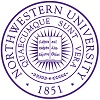专业详情
The geological science program is designed to give students broad training in the basic sciences as well as field, theoretical, and practical experience through research in their specialty. The program has particular strengths in geophysics, geochemistry and petrology, structural geology, sedimentology, marine ecology, and energy resources. However, the exceptional flexibility of Cornell’s graduate program provides ample opportunity for students to work across disciplinary areas. For example, arrangements exist for study of marine ecology, water resources, and various branches of applied geological science. Faculty members in other fields or divisions offer interdisciplinary courses including planetology and extraterrestrial geology, paleobotany, ecology and systematics, biogeochemistry, limnology, soil genesis, soil mineralogy, soil and rock mechanics, remote sensing, environmental fluid mechanics and hydrology, fluid dynamics, elasticity, geotechnical and earthquake engineering, regional planning, hydraulics and hydrology, and materials science and engineering.
Research and study opportunities:
Research programs are being conducted by the field in such diverse areas as fluid cycling in subduction zones; space-based geodetic studies of faults, volcanoes, and anthropogenic deformation; interaction of tectonics, topography, and climate in major mountain systems; investigation of igneous rocks in arc systems; tectonics, seismology, sedimentation, and geomorphology of the central Andes; planetary science, comparative planetology and solar system exploration; seismic reflection profiling of the deep crust and upper mantle; mechanics and properties of subduction zone megathrusts and other large faults; induced earthquakes; using seismic signals of earth noise to understand atmospheric and solid-earth phenomena; development and application of Earth System models; response of marine ecosystems to climate variability and change; surface responses to extreme precipitation; dynamics and mechanics of the lithosphere and asthenosphere; application of geophysical techniques to environmental and archaeological problems; marine ecological and paleontological studies; sedimentology and diagenesis of mudstones; dynamics of marine ecosystems and organisms from plankton to whales using remote sensing and other tools; volcanic hazard assessment; biogeochemistry, soil development, and dynamics in young volcanic terrains; geochemistry and geophysics of oceanic islands, mid-ocean ridges and island arcs; and remote sensing of seismic and volcanic deformation of the crust.
The field maintains working agreements with institutions worldwide to facilitate research projects in those areas or to work on materials especially accessible there. Current and recent graduate students have carried out field investigations in such diverse places as Alaska, the Pacific Northwest, Honduras, Chile, Argentina, Hawaii, Puerto Rico, Monterey Bay (California), Papua New Guinea, Ethiopia, and Tibet. The Paleontological Research Institution, located near the campus, has world-renowned facilities and collections available to students interested in paleontology.


